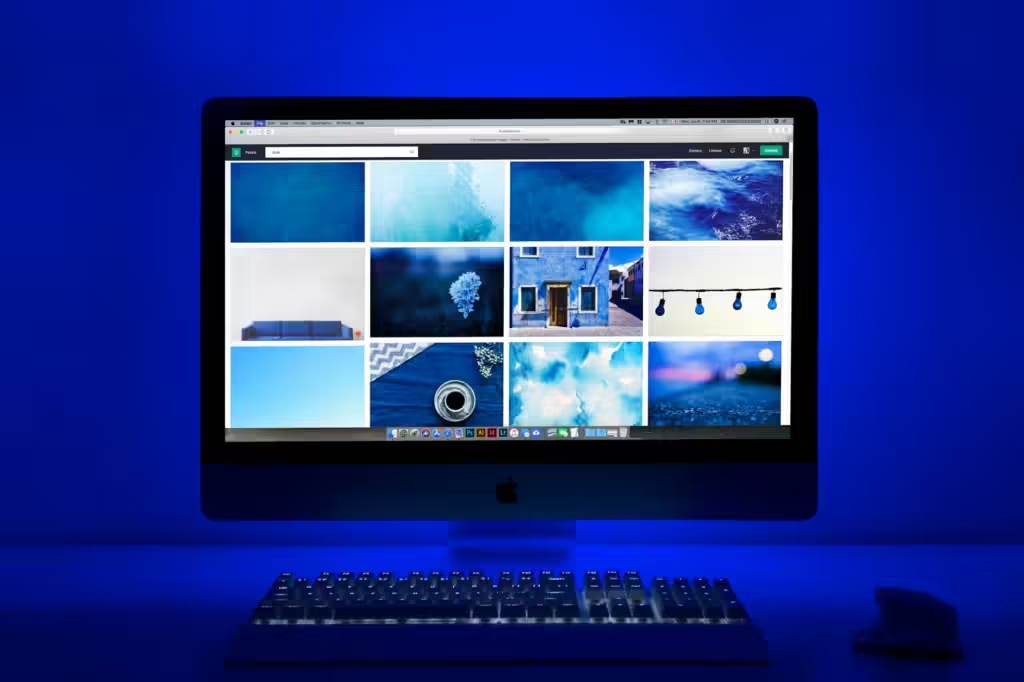
In our increasingly digital world, blue light is everywhere—from your smartphone to your TV screen. But what exactly is blue light, and why should you care? This article dives deep into the science behind blue light, exploring its effects on your health, both good and bad. With compelling research and practical advice, you’ll learn how to protect your eyes and enhance your well-being. Ready to take control of your screen time? Let’s get started!
What Is Blue Light
Blue light is a part of the visible light spectrum, which is the light that the human eye can see. It has a short wavelength (between 380 and 500 nanometers), making it one of the highest-energy wavelengths. Here’s a closer look at what blue light is and where it comes from:
• The Visible Light Spectrum: Blue light is one segment of the visible light spectrum, which includes all the colors visible to the human eye. The spectrum ranges from longer-wavelength red light to shorter-wavelength blue and violet light.
• Natural Blue Light: The sun is the main source of natural blue light. This natural exposure plays a crucial role in regulating your circadian rhythm, which is your body’s internal clock that dictates your sleep-wake cycle.
• Artificial Blue Light: Digital devices like smartphones, tablets, and computers emit blue light, as do energy-efficient light sources like LED and fluorescent lights. This artificial exposure is much more constant and often closer to the eyes than natural sources.
• Natural vs. Artificial Blue Light: While natural blue light from the sun is beneficial in moderation, the artificial blue light from screens and other digital devices can be harmful if exposure is excessive, especially after dark.
The Effects of Blue Light on Your Eyes and Health
The pervasive presence of blue light in our daily lives raises significant concerns about its impact on our eyes and overall health. Let’s explore the various effects:
• Short-Term Effects: Exposure to blue light, especially from screens, can lead to digital eye strain (DES). Symptoms include dry eyes, headaches, blurred vision, and difficulty focusing. It’s also known as computer vision syndrome (CVS).
• Long-Term Risks: Continuous exposure to blue light has been linked to potential damage to the retina, leading to conditions such as age-related macular degeneration (AMD). This can result in permanent vision loss.
• Impact on Sleep Patterns: Blue light, particularly from screens, interferes with the production of melatonin, a hormone that regulates sleep. Exposure to blue light in the evening can disrupt your sleep patterns, making it harder to fall asleep and stay asleep.
• Circadian Rhythm Disruption: Overexposure to blue light at night can confuse your body’s internal clock, leading to sleep disorders and chronic fatigue. This is because blue light signals to your brain that it’s still daylight, delaying the onset of sleep.
The Benefits of Blue Light
While blue light has its drawbacks, it’s important to recognize that it also offers some benefits, particularly when exposure is balanced and timed correctly:
• Boosts Alertness and Cognitive Function: During the day, blue light can help improve alertness, attention, and reaction times. This is why exposure to natural blue light during the day is essential for maintaining focus and productivity.
• Regulates Sleep-Wake Cycles: Blue light is crucial for regulating your circadian rhythm. Exposure to blue light in the morning can help you wake up and feel more alert, as it suppresses melatonin production, signaling to your body that it’s time to be awake.
• Blue Light in Medical Treatments: Blue light therapy is used to treat certain conditions, including seasonal affective disorder (SAD), a type of depression that occurs at certain times of the year, usually in the winter. It’s also used in treating neonatal jaundice.
• Daytime Benefits: Exposure to blue light during the daytime, particularly from natural sources, can have a positive impact on mood, energy levels, and overall mental health.
How to Protect Yourself from Excessive Blue Light Exposure
Given the potential risks associated with overexposure to blue light, it’s important to take steps to protect your eyes and health, especially if you spend a lot of time in front of screens. Here’s how:
• Best Practices for Reducing Exposure: Limit screen time, especially before bed. Follow the 20-20-20 rule: every 20 minutes, look at something 20 feet away for at least 20 seconds. This can help reduce eye strain.
• Blue Light Blocking Glasses and Filters: These specially designed glasses can block or filter out blue light, reducing the amount that reaches your eyes. They’re particularly useful if you work in front of a screen for extended periods.
• Adjusting Screen Settings: Most devices now come with a “night mode” or “blue light filter” setting that reduces the amount of blue light emitted by the screen. You can also manually adjust the brightness and contrast to more comfortable levels.
• Lifestyle Changes: Incorporate more outdoor activities into your routine to balance your exposure to natural light. Consider changing your home and workspace lighting to warmer, less blue-heavy options in the evening.
The Future of Blue Light Technology
As awareness of blue light’s impact grows, so does the technology aimed at mitigating its effects. Here’s what to expect:
• Advances in Screen Technology: Manufacturers are developing screens that emit less blue light without compromising display quality. This includes advancements in OLED technology, which naturally emits less blue light.
• Healthcare Innovations: Blue light’s role in health is being explored further, with potential applications in treating various conditions, including sleep disorders and skin conditions.
• Predictions for 2024: Expect increased regulation and consumer awareness regarding blue light exposure, particularly in relation to workplace ergonomics and screen time recommendations.
Conclusion
Blue light is a double-edged sword—while it offers some benefits, excessive exposure can be harmful. By understanding its effects and taking steps to protect yourself, you can enjoy the perks of modern technology without compromising your health. Stay informed, and take action to reduce your blue light exposure today. Ready to make changes? Start with these simple tips and notice the difference in your well-being!
Call to Action:
To learn more about how you can protect your eyes and improve your sleep, check out our other articles on digital eye strain, the best blue light blocking glasses, and tips for a tech-free bedtime routine.

